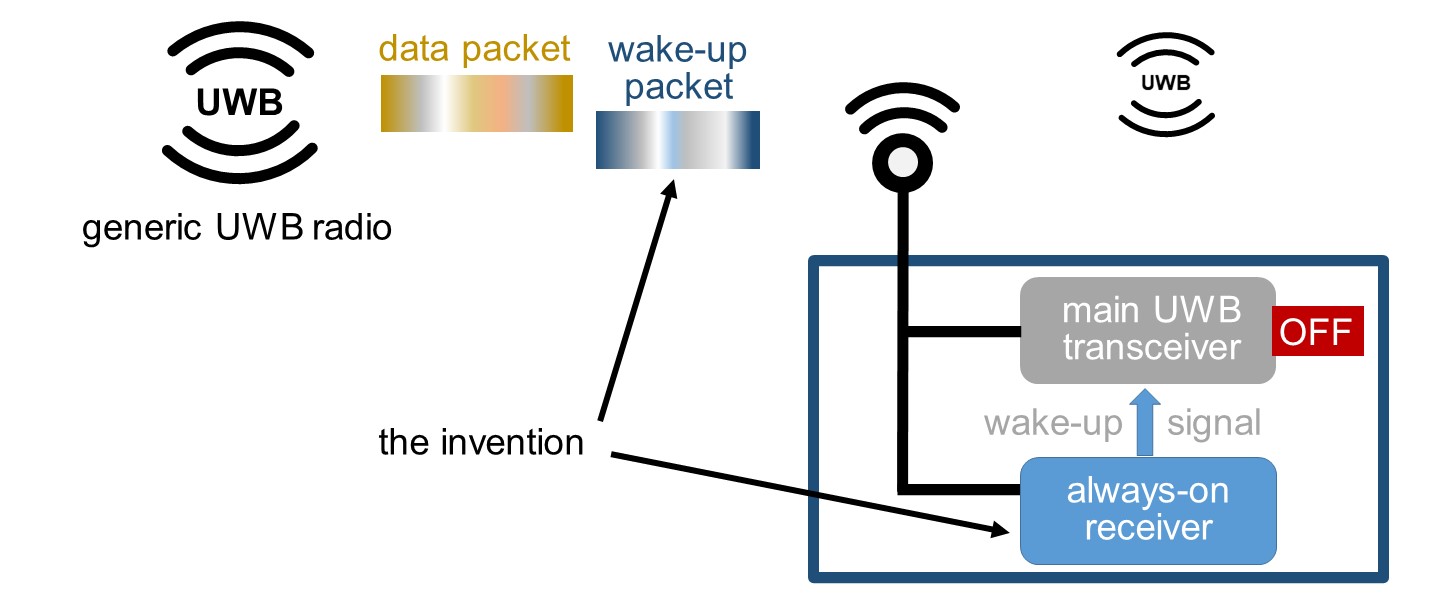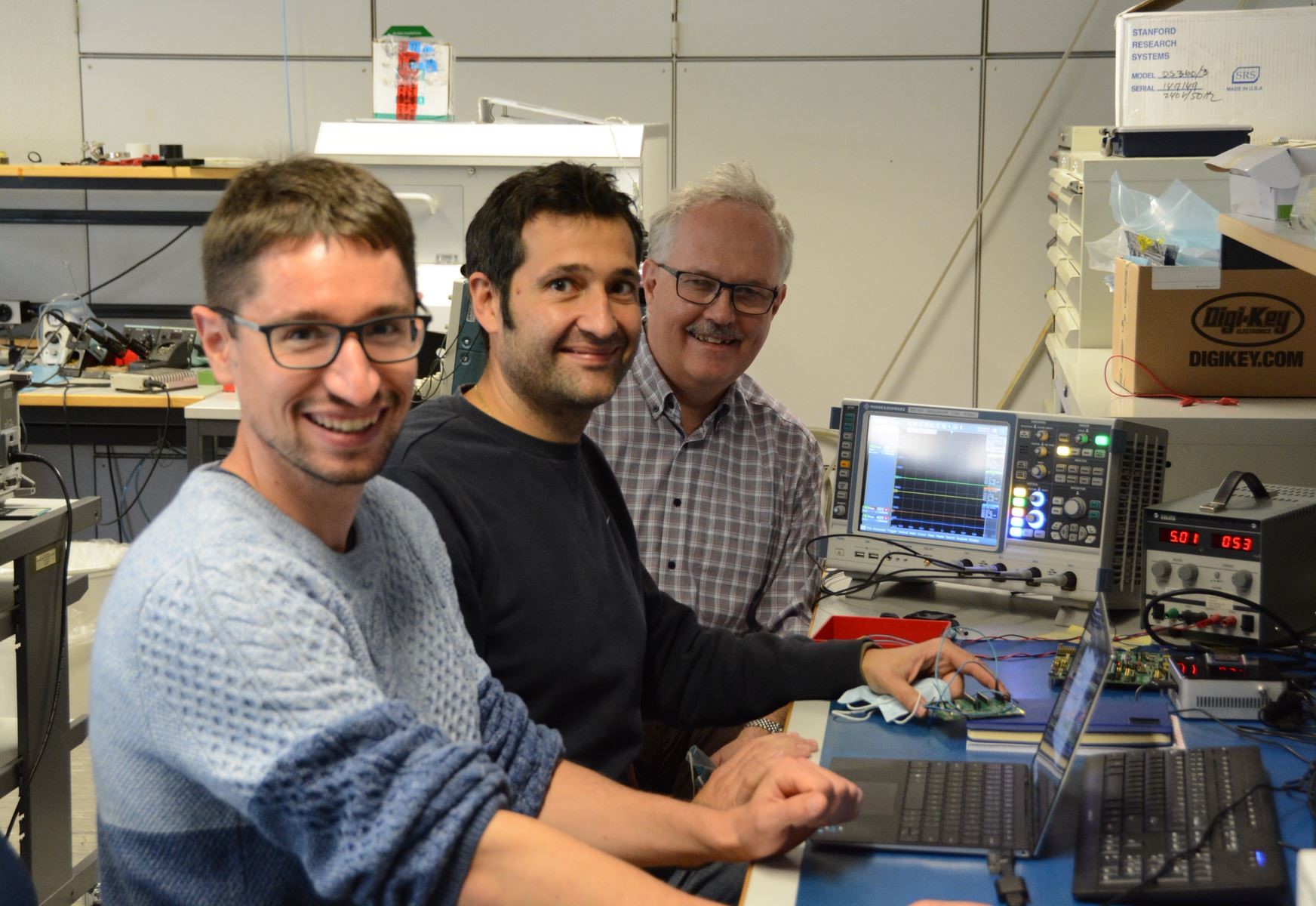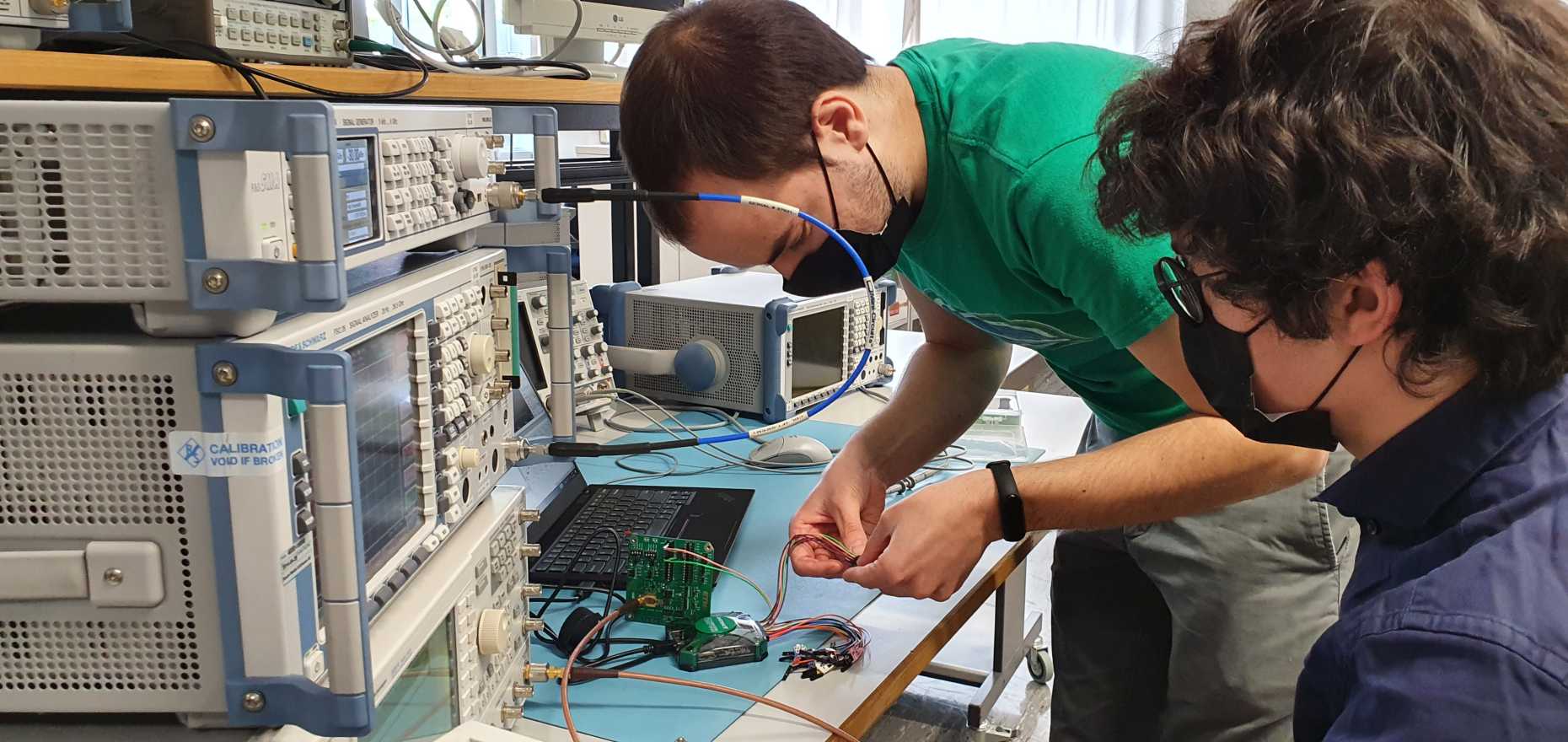Always-on UWB: the next generation of localisation and secure communication
UWB communication is a fast rising technology, which will facilitate indoor localisation, navigation, and boost secure communication between smart devices. Michele Magno, Head of the Center for Project-based Learning (D-ITET), implements new power-saving features for this technology so that it can work efficiently in mobile devices.

What is UWB communication about?
UWB communication is an amazing new technology, which allows positioning and localisation of smart objects with high precision. UWB is particularly suited for indoor applications of mobile battery operated devices. It can work as a guiding system for visitors in public buildings such as airports; it can grant access to restricted areas by identifying the approaching person; or it can apply customised settings, making a visit to a museum more interactive. We are right at an exciting turning point where UWB communication takes the step from technical concept to real world application. We will see an explosion of applications.
What does UWB stand for? What are the current drawbacks?
UWB stands for ultra-wide band. It is a communication signal in the GHz frequency range and thus much different from Bluetooth or WiFi, which operate in the MHz frequency range. UWB is a very power hungry technology. Nowadays, a commercial UWB transmitter consumes about 10-100 mW of power just in its idle state, which is a drag for battery-operated devices such as mobile phones.
What can we do about the high power consumption?
Ideally, we would like to switch the UWB transmitter to sleep mode when no communication is happening in order to save power. In sleep mode, however, the transmitter does not process any UWB signals and, thus, loses its responsiveness. This is where our invention comes into play.
We invented a low power wake-up receiver for the UWB transmitter. It is a tiny, on-chip circuit, which we hook up to the same antenna as the UWB transmitter. The wake-up receiver remains always on and waits for a trigger signal. Once it receives a trigger signal, it will power up the UWB transmitter without any significant delay – that is a few hundred milliseconds.

The wake-up receiver can furthermore process encrypted messages. So, as a user you can protect your UWB equipped device from any unauthorized activation, which we consider an important feature for all future applications.
The wake-up receiver uses a factor of 1000 less power than the UWB transmitter. A device equipped with our wake-up receiver will always be ready for UWB communication and, at the same time, is no burden for the power management of battery-operated devices.


What is the status of your invention?
We have a fully tested prototype ready built from off-the-shelf discrete components. It allows retrofitting of smart devices at low cost. Moreover, my co-inventor, Thomas Burger, and two students from the Center of Project-Based Learning at the Department of Information Technology and Electrical Engineering (D-ITET), have implemented a prototype of the wake-up receiver as an integrated circuit and are currently running tests.
As the head of the Center for Project Based Learning, I would like to add that the Center welcomes collaborations with industry. If one of our readers has a project in mind for retrofitting or designing a device with our receiver, or where an embedded system with sensors, communication, machine learning, or energy harvesting is necessary, we can join forces. Our students get practice working on an industrial product. Our partners benefit from obtaining a customised prototype.

Dr. Michele Magno, Head of the Center of Project-Based Learning (D-ITET)
(photo: MRTNPICTURES)
Contact/Links:
Michele Magno, Center of Project-Based Learning (D-ITET)
Patent pending, please contact ETH transfer for further information
Do you want to get more "News for Industry" stories?
external pageSubscribe to our newslettercall_made
external pageFollow us on LinkedIncall_made
Are you looking for research partners at ETH Zurich?
Contact ETH Industry Relations
